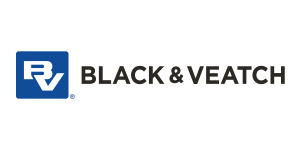Ownership Responsibility and Liability
Contents
- Dam Failures and Losses
- Compliance
- Strict Liability and Negligence
- Risk Management
- Dam Owner Academy Series
- Save this page as a printable Dam Owner's Fact Sheet [PDF]
Are dam owners liable for failures?
Common law holds that the storage of water is a hazardous activity.
Dams are owned and operated by individuals, private and public organizations, and the government. The responsibility for maintaining a safe dam rests with the owner. A dam failure resulting in an uncontrolled release of the reservoir can have a devastating effect on persons and property downstream. Tens of thousands of public and private dam owners in the United States have exposure to liability for the water stored behind their dams. Safely maintaining a dam is a key element in preventing a failure and limiting the liability that an owner could face.
Public safety around dams is also the responsibility of the owner. Dams can create a hazardous environment and dangerous hydraulic features. Dam owners need to consider issues with accessibility by the public to the dam and the surrounding area.
Dam Failure
The failure of a dam has the potential for loss of life and catastrophic impact on communities, private property and public works downstream. The data shows that there are approximately 10 to 20 failures per year involving uncontrolled release of reservoirs. Failure of even small dams can result in serious injuries, fatalities, disruption of business operations, damage to critical infrastructure and other extensive property damage.
"In today’s litigious society it is safe to assume that in the case of catastrophic dam failure, extensive litigation will ensue. Any competent lawyer, representing the victims, will sue all possible wrong doers in seeking redress…including…the owners and operators of the facility, and…architects, engineers, contractors, sub-contractors, and consultants involved in the original construction and any subsequent modifications…"
– Denis Binder, Professor of Law, Chapman University
The cost of dam failure is difficult to assess because flooding can affect large areas, often beyond the floodplain areas where flood insurance is required. The dam owner loses a valuable asset and faces reconstruction costs and possible liability for downstream damages. Local communities may be directly impacted due to building damage, injuries, fatalities, lost water supply, damaged transportation systems and infrastructure, and lost recreational assets.
Compliance
Compliance with government or professional standards does not absolve an owner from liability, but it does establish a minimum standard of care to be used by owners. The extent of liability in any situation depends on the facts of the case and how those facts are interpreted by a judge or jury.
Consequently, actions that result in owner liability in one state may not result in liability in different states. In general, a dam owner is required to use “reasonable care” in the operation and maintenance of a dam and reservoir.
Strict Liability and Negligence
The extent of an owner’s liability will vary from state to state, depending on the statutes and case law precedents. The concept of strict liability imposes liability on a dam owner for damages that occur regardless of the cause of failure. The alternative theory of negligence considers the degree of care employed by the owner in constructing, operating and maintaining a dam. Historically, courts have sought to compensate those injured by a dam failure. When assessing liability, the standard of care exercised by an owner will be closely examined. The standard of care should be in proportion to the downstream hazards involved. Where the risk is great, owners must be especially cautious. In many cases, a dam regulated by the federal government or a state dam safety program must be designed to withstand an unprecedented flood or earthquake.
Risk Management
An essential and logical part of an organization’s management program is the control of potential losses that may arise. To manage risks, an owner can utilize a combination of standard operating procedures, employee training, regular maintenance, emergency preparedness and liability insurance.
A dam owner can take several actions to protect against financial loss. Technical guidance and information is available from your state’s Dam Safety office.
Each dam should have:
- A state dam safety permit (if applicable).
- An operation plan, documented regular maintenance plan and emergency action plan.
- Documented periodic inspections.
- Warning signs and controlled access.
Dam Owner Academy: Dam Inspections
The Dam Owner Academy is a series of videos to educate and inform owners on all aspects of operating and maintaining a dam safely. The videos concisely present the critical basics of owner responsibilities and are available as a free resource for owners and those conducting owner outreach programs.
The 'Dam Inspection' video will provide an overview of regular dam inspections that can be carried out by an owner, including preparations, procedures, and next steps after your inspection is complete.


































